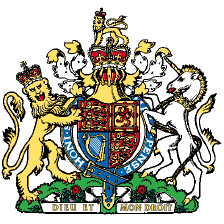Living in a relatively benign country in terms of climate, the UK has been experiencing inconvenient weather up to now but nothing that we cannot live with. Parts of the world that were already operating under more extremes will be tipped over the edge in terms of disruption.
Every tree planted is making a contribution to redress the balance and if everyone in the UK planted about one a year, and looked after them to secure their establishment and well-being, we would have at least 750 million more of them in ten years’ time. We need them and they need us.
With all this in mind Barcham Trees have commissioned specific research by Treeconomics in Exeter to look at the hard data gathered by internationally recognized measuring systems such as ‘I Tree’. Numbers can now be modelled on how much pollution filtration, water capture, carbon sequestration and carbon storage a genus will achieve over its lifespan.
We have modelled this to 300 years but there are many big hitting genus such as Sequoiadendron (Redwood), Quercus (Oak) and Taxus (Yew) that can carry on doing their job of both capturing carbon and storing carbon for centuries after this if we protect them.
On average we have grown our trees for about 7 years before we release them onto the market. We have taken into account their environmental cost of production in terms of carbon used for transport and even tractor fuel and water abstraction. Depending on the genus, our trees break even in terms of carbon storage by the time they reach about two years of age so when you get them they are already positively contributing.


All trees contribute but some live longer than others and attain greater sizes. The bigger the tree the more carbon is locked up. A Malus (Apple) tree may live for 70 years where as a Sequoiadendron giganteum (Giant Redwood) can live for over 3,000 years. Also, rates of carbon sequestration can differ per genus over their time. We have fed this into the model and come up with a scored rating to environmentally value a tree so the best environmental option can be chosen to suit what space allows.
Our environment ratings
All plants contribute towards carbon sequestration, but trees amass the most wood to lock this carbon up and store it. So, trees of great age that grow to huge sizes are the ones that count the most in this regard. Our ratings range from the top environmental ‘A’ grade to the less contributing ‘E’ grade. The woody trees are all within the A-C grades with smaller trees and shrubs making up the lower grades. Sycamore is an ‘A’ grade environmental asset whilst a Crab Apple is an ‘C’ grade. However, both are contributors to the environment, and it depends on the size and aspect of your planting position as to what genus you can opt for. A poor scenario is to plant an ‘A’ grader in too smaller space so it can never fulfil its contribution. Data to assess the quality of contribution has been collected and analysed over thousands of mature samples within the UK landscape.
The data used to model this has mostly come from trees in urban settings or trees in well populated rural locations. It should be noted that trees in the open countryside that can access greater soil volumes and that have greater space around them will grow to larger proportions and therefore store more carbon. It is estimated that the UK’s largest trees will store about three times the volumes shown in our modelling.
We now show a Barcham eco tree tag within each of our tree listings so if offsetting carbon is your main driver for planting, you can choose your trees with greater clarity.
Written by Mike Glover, Managing Director.


